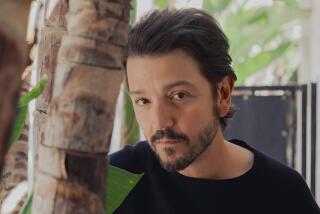Cinematographer Gabriel Figueroa was one of Mexico’s...
Cinematographer Gabriel Figueroa was one of Mexico’s great mythmakers, having created iconic images that continue to affect the way we view the country. Figueroa, who is being honored this weekend at the Getty Center by the UCLA Film and Television Archive and the Getty, treated his homeland with great respect, harnessing its beauty and its harshness.
After studying painting and photography, Figueroa learned cinematography in the U.S. from Gregg Toland, who would later shoot “Citizen Kane.” Figueroa returned to Mexico, where he would become a leading light during the nation’s Golden Age of cinema from the ‘30s to the ‘60s. Though he worked with Hollywood directors such as John Ford (“The Fugitive,” Saturday) and John Huston, the films he made at home, such as Luis Bunuel’s “Nazarin” (Friday) and especially in collaboration with Emilio Fernandez (“Enamordo,” Saturday), solidified his reputation.
Figueroa composed landscapes as if they were portraits and shot the faces of Mexico’s greatest stars as if they were beautiful landscapes. He was a master of black-and-white, and his bold depictions of skies and clouds were known as “Figueroa skies.” In fact, his work was held in such esteem, he’s been called the “fourth muralist,” after Diego Rivera, David Alfaro Siqueiros and Jose Clemente Orozco.
--
-- Kevin.Crust@latimes.com
More to Read
Only good movies
Get the Indie Focus newsletter, Mark Olsen's weekly guide to the world of cinema.
You may occasionally receive promotional content from the Los Angeles Times.











